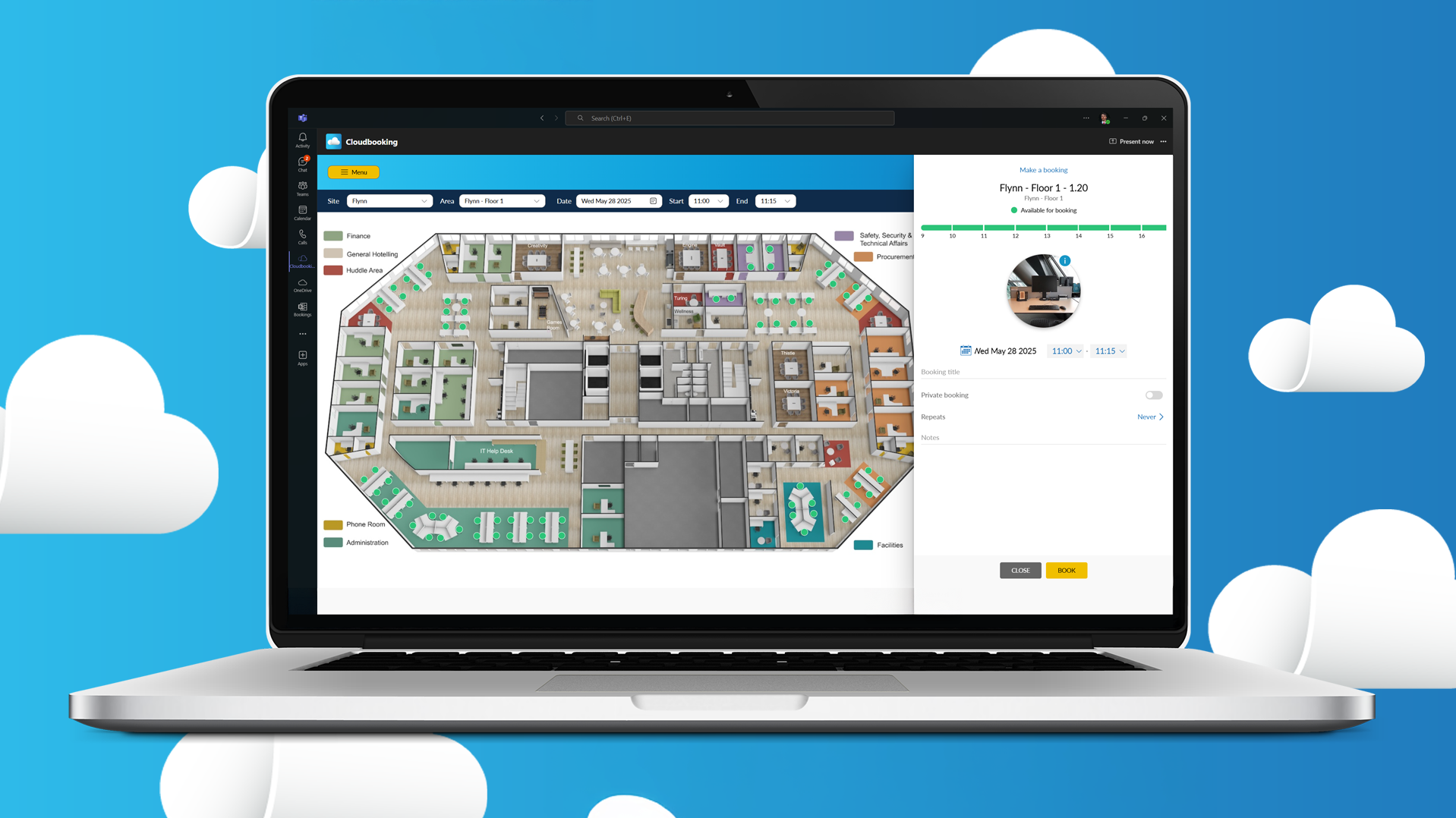
There’s a lot of talk these days about the benefits of desk sharing, and for good reason. Proponents of the practice claim that it leads to increased productivity and creativity in the workplace. But if you’re unsure how to make desk sharing work for your team, you’re not alone.
The concept of desk sharing can be a controversial one in the office. On the one hand, it’s a way to promote collaboration and increase efficiency. After all, if employees constantly move around and work in different areas, they’re bound to run into one another and strike up conversations that could lead to new ideas. Desk sharing can also free up space in the office and reduce costs.
However, desk sharing also has some drawbacks. For example, it can upset the balance of a happy office if employees constantly have to move their belongings around or if they clash over where, how, and when desks are used. Employees may fear the nomadic office, feeling like they have no home base or that their privacy is constantly being invaded.
However, these concerns can easily be addressed with the right approach to desk sharing.
A quick explanation of desk sharing
Desk sharing is a new trend in office design that is becoming popular among businesses of all sizes. The concept is simple: employees share desks and workspaces instead of each employee having their own desk.
This can be done on a rotational basis, with employees moving to a different desk each day, or it can be done on a more permanent basis, with employees sharing a desk permanently. Desk sharing has many advantages, including improved communication and collaboration, increased flexibility and agility, and reduced office costs.
However, there are also some challenges that businesses need to consider, such as ensuring privacy and minimizing distractions. You can find out more about this new way of working in our ultimate guide to desk sharing. Ultimately, whether or not desk sharing is right for your business will depend on your specific needs and goals.
Making desk sharing work in your office
There’s no one-size-fits-all answer to the question of how to implement desk sharing in an office, as the best way to do so will vary depending on your workplace’s specific needs and constraints. However, some general principles can be followed to ensure a successful transition to a shared workspace.
Get team buy-in
If you’re looking to implement office desk sharing in your workplace, getting your team’s buy-in is critical. Explain the benefits of desk sharing, such as increased collaboration and improved office morale. Address any concerns they may have, such as worries about personal space or lack of privacy.
Hold an open forum where everyone can share their thoughts and ideas. Measure resistance and address the pain points. By implementing desk sharing thoughtfully and deliberately, you can create a more agile and productive workplace.
Be flexible
Consider who needs a designated workspace. Employees who work mainly on computers may not need a physical desk, while others may only need one occasionally. Receptionists and customer service staff, on the other hand, may require a permanent desk to do their job effectively.
Once you’ve identified who needs a designated workspace (and who doesn’t), you can start thinking about how to accommodate them within your new office design. Hot-desking or remote working may not suit everyone, so be flexible and make exceptions where necessary.
Set rules and guidelines
To ensure everyone is on the same page, it will help if you create hot desking rules and guidelines that everyone can follow. For example, you might want to implement an end-of-day clear desk policy, where each person is responsible for tidying up and cleaning their workspace before they leave for the day. By taking some time to establish ground rules, you ensure the office runs smoothly — even if everyone isn’t sitting in the same place.
It is important to communicate the hot-desking rules to all employees and ensure everyone is on board with the plan. By taking these steps, you can create a well-organized workspace that maximizes flexibility and minimizes conflict.
Think about practical storage
A well-designed office takes into account the need for employee storage. Hot desking might be popular, but it can lead to a feeling of disconnection from the company. Employees need somewhere to store their personal belongings. They don’t want to drag their gym clothes and lunch around with them all day.
The solution is to provide storage solutions that fit the needs of a digital workplace. Office desk plans should include accessible and easy-to-use storage options. Workspace design should be flexible and adaptable to different needs. Agile principles should be used to create a productive and comfortable space for employees.
Introduce new workplaces
When designing your office, keep in mind the types of work that need to be supported. For example, quiet spaces are essential for focused work, while large open areas are ideal for brainstorming sessions and team collaboration.
To create a truly effective office space, you need a clear understanding of the work that will be taking place there. Once you know what type of work needs to be done, you can start to design a hybrid office that will foster community and collaboration while respecting designated areas for socializing, brainstorming, and meetings. By following these simple tips, you can create an office space that is efficient and enjoyable to work in.
Consider noise levels
In today’s digital workplace, it’s more important than ever to consider noise levels. Open and agile office plans that embrace hot desking can be quite loud, leading to distraction and decreased productivity. To combat this, ensure that as many devices as is practical are kept on silent and that conversations are only held in designated spaces (not in designated quiet zones).
Take phone calls and hold meetings in spaces away from individual desks and equip your office with carpets and other noise-absorbing assets. By considering noise levels and taking steps to mitigate them, you can create a more productive and enjoyable workspace for everyone.
Taking it slow
If you’re considering implementing a hot-desking environment in your office, make changes gradually. A complete changeover in a short period is likely to be disruptive for your team and could lead to a lot of resistance. Instead, start by leaning into the new approach with the employees most invested in the change. These employees can act as early adopters and help pave the way for the rest of the team.
As you roll out the new workspace design, keep the agile principles of flexibility and adaptability in mind. The digital workplace is constantly evolving, so your office must evolve with it. By taking things slowly and being open to change, you ensure that your office is ready for anything.
Embrace technology
The modern office is designed to be more agile and responsive to the needs of today’s businesses. Hot desking is a key part of this, and it’s important to have the right technology in place to make it work. Desk booking software helps you manage your office space more efficiently, while visitor management software ensures everyone can access the workspace they need.
But it’s not just about the desk booking itself. Hybrid working can mean widely-spread teams, so collaboration and communication tools are critical if agile working is effective and efficient. With the right technology in place and a focus on creating a smart office, your team can be more flexible, responsive, and productive.
The office of tomorrow, right now
There’s no denying that the traditional office is on its way out. The global pandemic has accelerated this trend, with more and more companies embracing remote work. But workspace design was evolving long before the pandemic hit. Hot desking and other agile workspace principles are becoming more popular as they offer a more productive and flexible way to get the job done.
The digital workplace is also changing how we work, with tools like video conferencing and project management software making it easier than ever to collaborate remotely. As the workspace continues to evolve, it’s clear that the traditional office is no longer the only way to make a business run smoothly.
Considering switching to a hybrid workplace? Cloudbooking can help. Our workspace management software is designed to support agile principles and help you successfully adopt a desk-sharing work model. With Cloudbooking, you can easily manage workspace bookings, monitor workspace utilization, and more. Contact us now for a no-obligation product demo to learn more about how our software helps you embrace the future of work.


